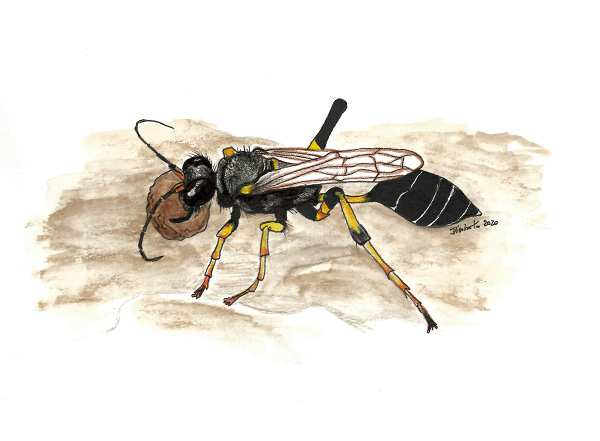Ladybug
Coccinella septempunctata
Coleoptera with a rounded shape and bright colours. The most common one is red with black dots, whose number changes depending on the species. Its presence in gardens and kitchen-gardens is important because of its greed towards aphids, the so-called plant lice. They feed on them both at the larval and adult stages. It is estimated that a single ladybug can devour up to 5,000 aphids in a year!
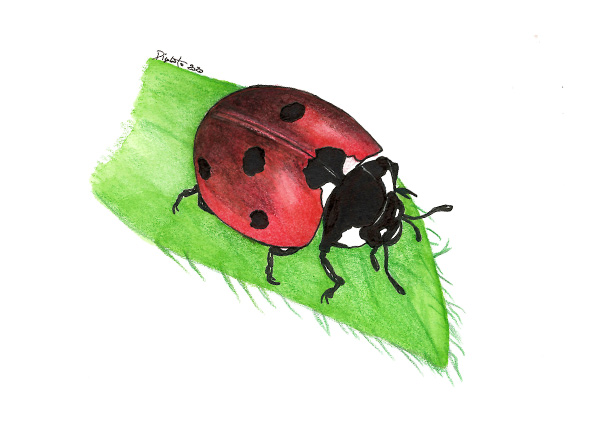
Mason bee
Osmia spp.
Belongs to the order of the Hymenoptera and to the family of the Megachilidae (solitary bees). Mason bee has the habit of choosing some cavities as their nest, where it lays various eggs and creates the cells with mud, so that each egg is alone in its own “space”. This bee is considered to be a more efficient pollinator than her "domestic" sister, especially on a smaller range (orchard, kitchen garden or cultivated field).
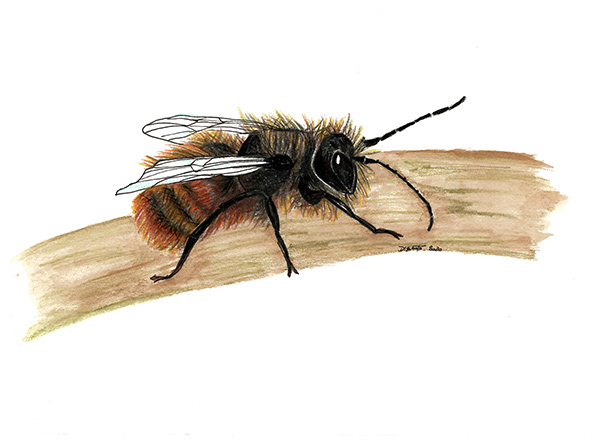
Earwig
Forficula auricularia
Belongs to the order of Dermaptera, its name is given by the presence of caudal forcep-like cerci, short and straight in the female, longer and curved in the male. Chooses his shelter in humid and shady places, not loving the light. It’s an omnivorous insect, but more often it plays the role of predator, nourishing of eggs and larvae of many harmful insects in agriculture.
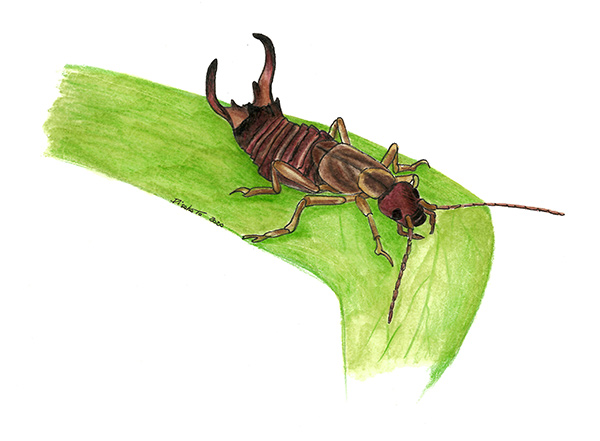
Hoverfly
Syrphus ribesii
Small "housefly disguised as a wasp" belonging to the order of the Diptera, utilizes what is called “protective mimicry”. It has a body with yellow and black stripes like a wasp, that’s why it is easy to confuse them. They stand out thanks to the shorter antennae and the compound eyes, typical of a housefly. The Sirphidae, besides being good pollinators, at the larval stage are also hungry predators of aphids.
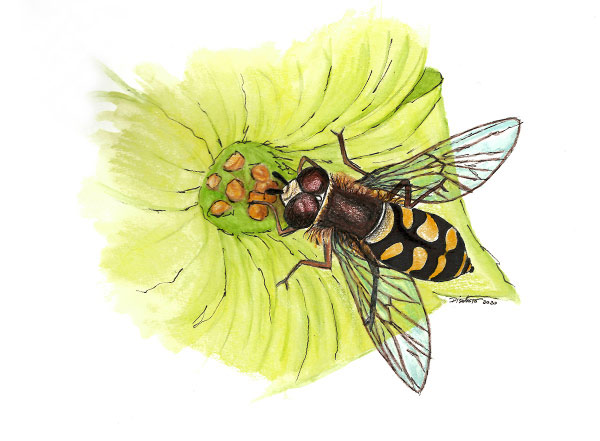
Green lacewing
Chrysoperla carnea
Insect belonging to the order of Neuroptera, its name means "golden-eyed", due to the metallic colour of its eyes. Another distinctive feature is the bright green colour of the body. They are skilled flyer and are nocturnal, feed on aphids (both in the larval and adult stage) but also on green bugs and scale insects.
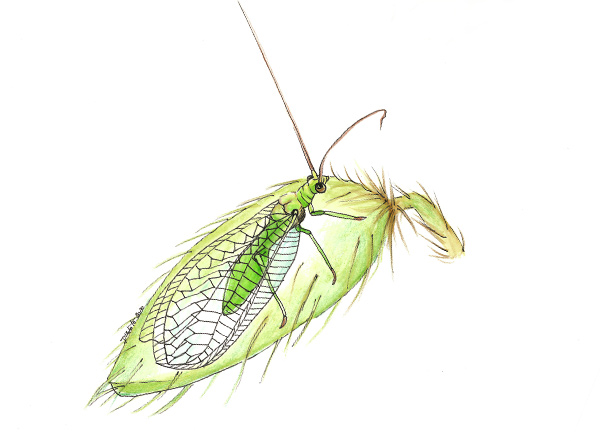
Black and yellow mud dauber
Sceliphron destillatorium
Females catch, paralyzes and brings back to the nest small preys, like aphids, for nourishing the larvae. At the young stage it feed on insects, at the adult one, on nectar. The way of nidification is very similar to that of the "cousins" solitary bees, that is, in cavities divided by mud septa, for the deposition of the eggs. Solitary too, of peaceful nature. Unlike the wasps living in colonies, it stings only if disturbed.
